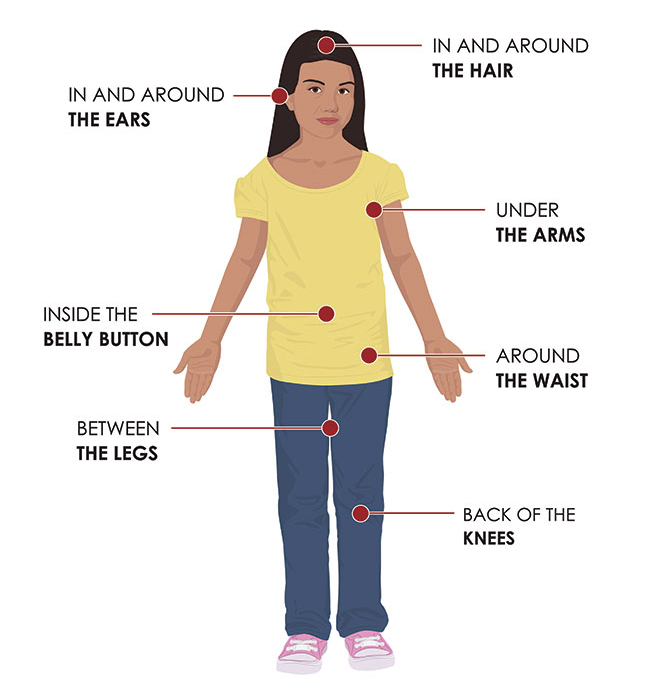The other night, as I was relaxing on the couch, absorbed in a good book, I went to scratch an itch on my neck and discovered a tick lodged there. Disgusting, yes, and quite alarming, but as we head into the summer months, a reminder to me to share what I’ve learned about natural tick repellent options. And, of course, practice what I preach!
Why Consider Natural Tick Repellent Options?
Choose the Natural Option as Your First Line of Defense
Tick-borne diseases can cause serious health complications and even death. Alarmingly, with climate change, these diseases are on the rise, and the geographic range of some tick species is expanding. All the more reason to safeguard yourself and your family against bites from these bugs (arachnids, to be precise) that carry potentially lethal pathogens.
That said, while tick-borne illnesses can be very serious, not all ticks carry deadly infections. In fact, the percentage of ticks in the U.S. that carry pathogens remains small.
So, before you automatically reach for the heavy-duty chemicals to spray on your property and/or yourself, there are a number of natural tick repellent options that can keep these pests away.
A Note About Insecticide Sprays for Your Yard
It’s tempting to think that a sweeping blanket of pesticides will rid your yard of dangerous pests. Unfortunately, that toxic covering will kill not only unwanted pests but also a variety of beneficial insects that act as natural pesticides. A recent study shows that butterfly and bee populations have been affected by insecticides sprayed in the air and on the ground.
Pesticide spray can also be toxic to humans, particularly children. When applied by inexperienced insecticide companies, they can be downright dangerous, not to mention unnecessarily expensive.
The bottom line: I recommend starting with natural tick repellent strategies as your defense against these unwanted pests. Failing that, I offer some stronger solutions.
Plants as a Natural Tick Repellent

Look to plants to act as a natural tick repellent, particularly those with a strong fragrance or pungent odor. Position some or all of these plants near seating areas to help deter ticks:
- Mint plants, including catnip, pennyroyal
- Herbs, including lavender, rosemary, sage, rue, wormwood
- Garlic
- Mexican marigold
Create Natural Barriers
Make your property uninviting for ticks, which 1) prefer humid, shady areas, and 2) need a host to feed on.
Strategic landscaping can reduce tick infestation:
- Get rid of piles of leaf litter and debris that can become wet or moist.
- Create a 3-foot barrier of wood chips or rocks between your lawn and any wooded, shady area.
- Prune bushes and shrubs near seating and gathering areas.
- Avoid wooded or brush areas on your property.
- Avoid high grass areas. If the tick problem is particularly bad in your yard, keep the grass short during spring and summer months.
Keep Tick Hosts (Deer!) Away
What are “deer ticks”?
Blacklegged (aka “deer”) ticks hatch as larvae and begin their life-cycle feeding on small rodents (or birds), which are sometimes infected with Lyme disease. The larvae then mature into “nymphs.”
While deer are immune to Lyme, they can become hosts to any infected nymphs. When those deer end up in your yard, the infected nymphs can land on and possibly infect you.
One way to minimize exposure to infected ticks, therefore, is to reduce the number of deer that could pay a visit to your property.
Fencing
An easy and very effective solution is a tall fence to keep out unwanted deer. Many communities, however, restrict fencing and if you have a large property, fencing it could be pricey.
Plantings
Another way to keep the deer away from your property is to increase your deer-resistant plantings. Not a perfect solution, but it’ll help reduce their visits to your property.
Based on where you live, your selection of deer-resistant plants will vary. The Spruce has a handy state-by-state guide to deer-resistant plants.
Keeping Other Hosts Tick-Free

Other tick hosts include dogs, rodents, and birds.
Mice
Tick Tubes. Yes, tick tubes contain permethrin, but this toxic chemical is contained. The tubes are placed around your property and filled with treated cotton balls that mice collect to make their nests. Any ticks on the mice are killed from exposure to permethrin while the mice are left unharmed.
I haven’t tried them, but Dammix is a popular tick tube brand to try. Due to permethrin’s toxicity level, handle with care. (See my note below about clothing treated with permethrin.)
Dogs
I’ve used Frontline on my two dogs and it has had no effect in preventing ticks. I’d be interested to hear if others have had the same experience. My most effective strategy has been a thorough check when they come indoors.
Natural Tick Repellent When You’re Outdoors
Proper Clothing

Simple, but effective: Proper clothing can be extremely effective in preventing bug bites. If you’re going for a long nature hike, wear light-colored clothing so you can spot ticks. Keep shirts long-sleeved and tuck your pants into your socks. It doesn’t look pretty, but you’ll be rewarded with no bug bites.
When you get home, throw everything in the washing machine, followed by the dryer at high heat to kill any unwanted pests.
Body Sprays and Lotions
If you’re on the trails for a long period of time in an area that’s a natural habitat for ticks, it’s time to consider using a stronger repellent. The benefits of keeping ticks off your body outweigh the risk of contracting a tick-borne disease like Lyme. When used when needed and according to directions, these products have a place in combating ticks.
Oil of Lemon Eucalyptus (OLE). Not to be confused with lemon eucalyptus oil, OLE is refined to amplify the effects of its naturally occurring substance, PMD (para-menthane-3,8-diol). Product suggestions:
Picaridin. A more recent addition to the range of insect repellents and considered less toxic than DEET. Product suggestions:
IR3535. Another synthetic repellent registered by the EPA and used for over 20 years in Europe with no harmful effects.
DEET. Although deemed safe by the Centers for Disease Control and the Environmental Working Group, I’m still not comfortable using unless absolutely necessary – for example, camping out for an extended period in an area that is a high risk for disease-carrying tick populations.
What About Clothing Treated with Insecticide?
I don’t recommend these, which are usually pre-treated with permethrin, a “likely carcinogen.”
Further Reading
The Environmental Working Group‘s Review of Bug Repellents is extensive and from a trusted source.
Stay on The Trail
It’s tempting to explore beyond the hiking trail, but you’re more likely to bring some ticks home with you. Avoid woody areas that ticks prefer and keep your dog away too!
When You Get Home: Body Check

When you get home, do a thorough body check for ticks. Areas to check include under your arms, in and around ears, belly button, hair, around the waist.
Shower, ideally within two hours of being outdoors.
If You Find a Tick on Your Body
If you find a tick on your body soon after your nature walk, most likely it’s not a problem. Ticks typically need at least 24 hours to pass along infections. To be safe, carefully remove the tick, put it in a baggie, and bring it to your doctor for testing.
This video, below, from Westchester County, NY Health Department shows you how to safely remove a tick. Tweezers are fine for tick removal, but I recently purchased the Tick Twister Tick Remover Set with small and large twisters and it was a breeze to remove a particularly large tick from my dog.










